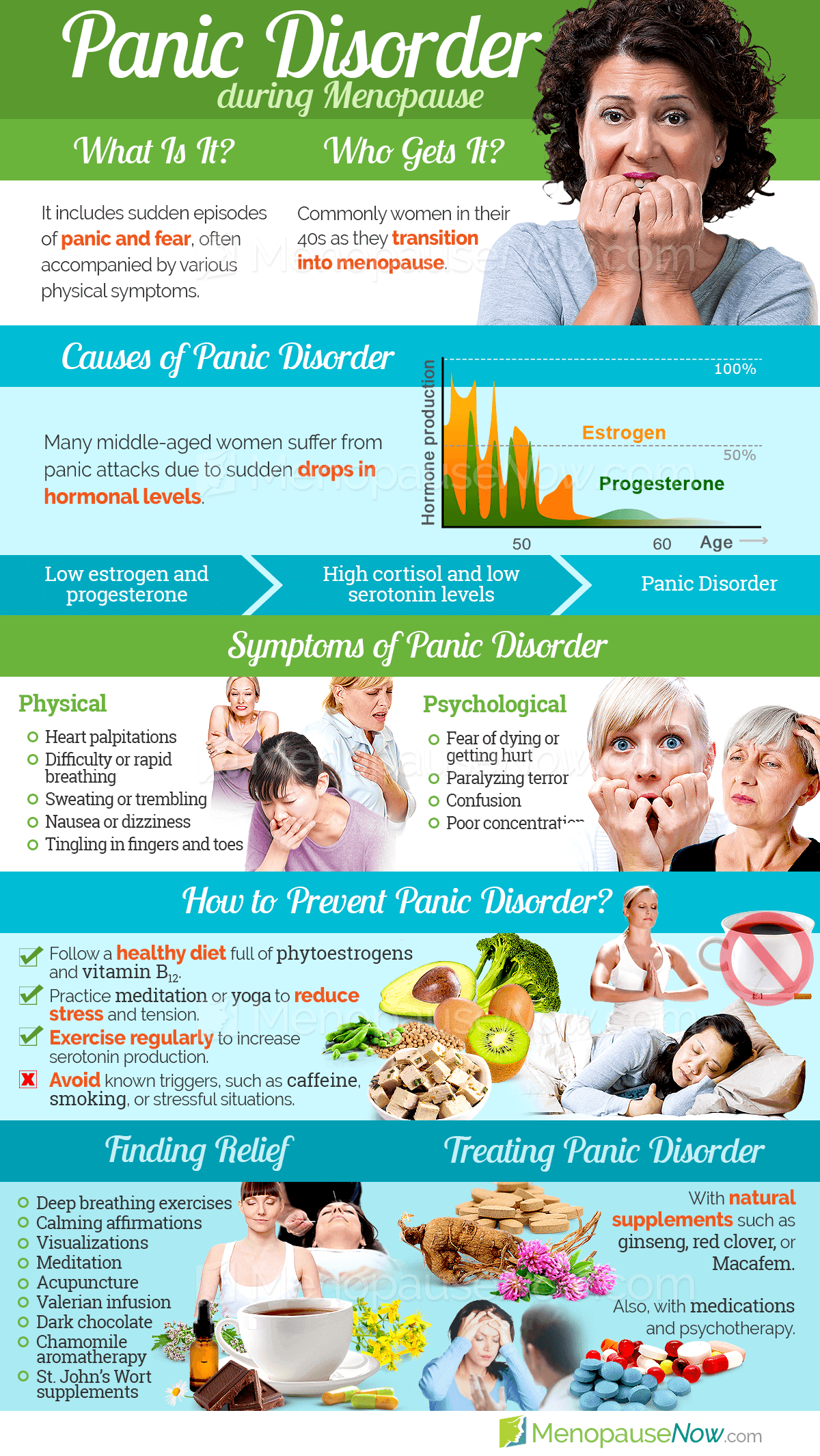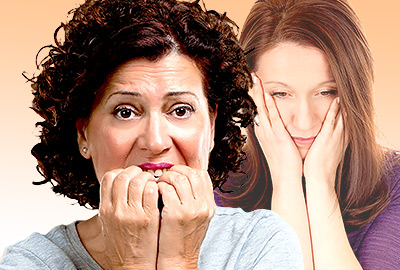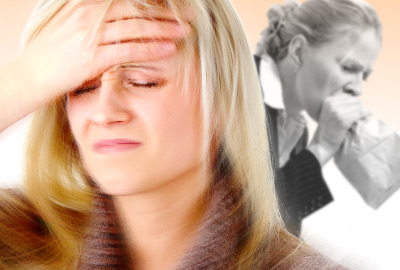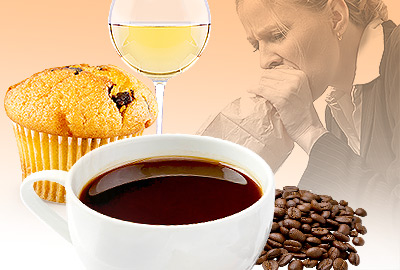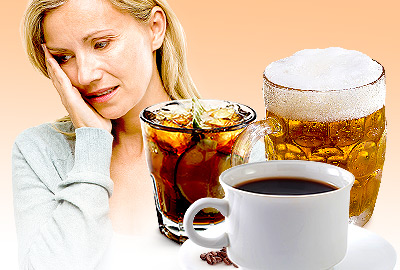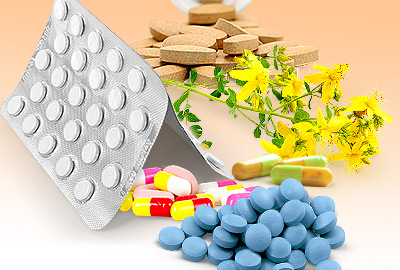Panic disorder during menopause can become a very debilitating symptom for many women. Sometimes, for apparently no reason at all, a woman's heart rate increases, her breathing quickens, beads of perspiration gather on her brow, and she experiences rushes of energy, as though her "fight-or-flight" instinct has been activated. Because of the hormonal fluctuations that happen during menopause, several physical and psychological effects can take place, such as panic disorder. By better understanding panic disorder, women can find the appropriate treatment options for their symptoms. Read below to learn all about panic disorder, its causes, and treatment options.
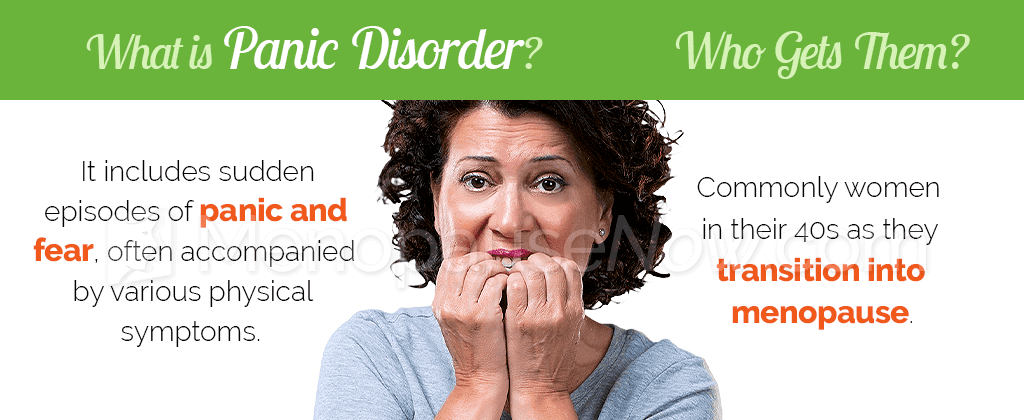
About Panic Disorder
Did You Know?
About 6 million American adults suffer from panic disorders, and it is twice as common in women as in men.
One of the most common types of psychological disorders, panic disorder is an anxiety disorder characterized by unexpected and repeated episodes of intense fear accompanied by physical symptoms that may include chest pain, heart palpitations, shortness of breath, dizziness, or abdominal distress. These episodes are often referred to as "panic attacks" and can often resemble a heart attack. They may strike at any time and occur without a known reason, but they more frequently are triggered by specific events or thoughts, such as taking an elevator or driving. The attacks may be so terrifying that some people associate the place they occurred with their attacks and will refuse to go there again.
Symptoms of panic disorder
There are some common symptoms of panic disorder that can help women identify this disorder. Many of the below symptoms peak and begin to dissipate within 10 minutes of the onset of a panic attack, but others may remain for longer. The common symptoms of panic disorder are:
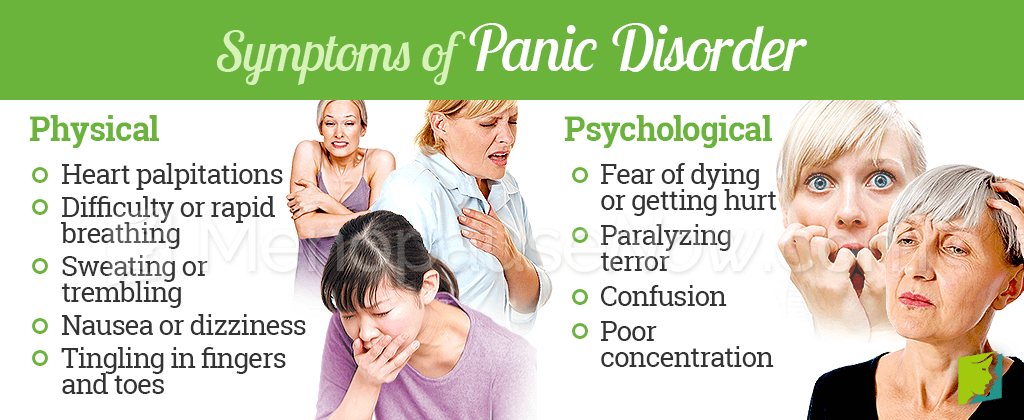
Continue reading to learn the causes of panic disorder.
Causes of Panic Disorder
It is often difficult to pinpoint the exact causes of panic disorder because so many factors are involved, such as emotional and physical problems an traumatic events. However, because women are twice as likely to suffer from panic disorder as men - especially during PMS, pregnancy, and menopause - many researchers believe that changes in hormone levels are typically the underlying cause.
During menopause, estrogen and progesterone production fluctuates, which has a major effect on mood as well as the body. Shifts in both estrogen and progesterone levels can influence panic disorder during menopause.
Estrogen inhibits production of the "stress hormone," cortisol. When estrogen production decreases, cortisol levels rise, raising blood pressure and blood sugar, and causing panic disorder. Estrogen also has an important effect on a neurotransmitter called serotonin, which is responsible for balanced moods. Estrogen helps regulate the production of serotonin and prevent its reuptake. The drop of serotonin levels that accompanies low estrogen levels during menopause causes an unstable mood and, as a result, anxiety and panic.
In addition, drops in the hormone progesterone also contribute to panic disorder. Progesterone has been shown to have a calming, soothing effect on the brain, so low levels of progesterone can make the brain and body more susceptible to anxiety.
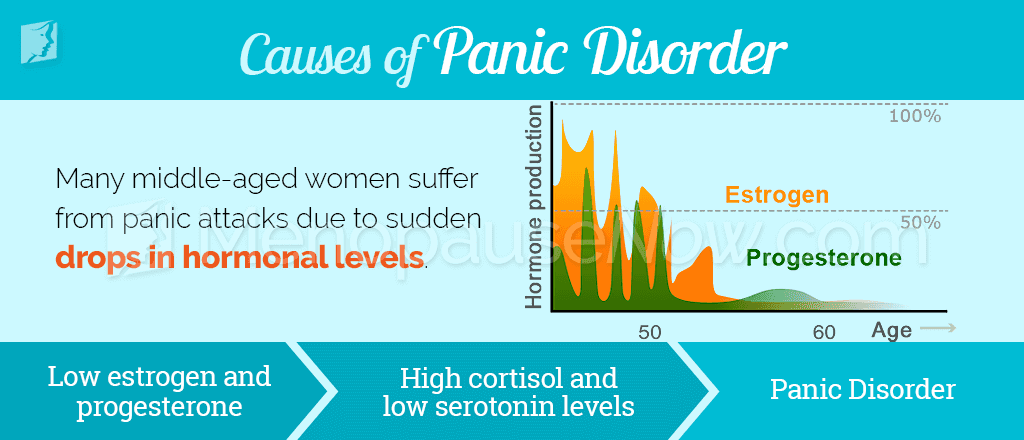
Other causes of panic disorder
Risk Factors for Panic Disorder
- Genetics. A family history of mental illnesses will put women at an increased risk for panic disorder during menopause.
- Brain chemistry. Traumatic psychological events or simply an unusual sensitivity can make some women more responsive to the changes occurring in their bodies during menopause, meaning they will be more prone to the causes of panic disorder described above.
- Environmental factors. A stressful work schedule, death in the family, nicotine, and bad sleeping patterns can lead to panic disorder.
During menopause, the hormonal changes described above leave women even more susceptible to other causes of panic disorder that come from their lifestyle or stressful life events.
Caffeine
Caffeine is stimulant, and in excess, it can cause jitteriness.
Pessimism
Interpreting even minor things in a negative or catastrophic way can trigger the nervous system and cause a panic attack.
Changing roles
During menopause, a woman's life may change just as rapidly as her body. For many women, children leave home, parents fall ill, and other traumatic life events can occur like the death of a spouse. All of these factors can also lead to panic disorder.
Continue reading to learn more about the treatment options available for panic disorder.
Panic Disorder Treatments
To treat panic disorder in the healthiest manner possible, it's important to explore treatment options that address the root of the problem without inducing harmful side effects. That's why it's generally recommended to begin with lifestyle changes, then move onto alternative medicines, and if nothing else seems to be working, look to medications to alleviate the symptoms of panic disorder.

Lifestyle changes are the least obtrusive form of treating panic disorder. A woman who suffers from panic disorder should first make sure her diet is healthy and has adequate essential nutrients. It's also a good idea to make sure that she is getting proper exercise and sleeping the necessary seven to eight hours a night.
Alternative medicines are the next step on the path to treatment. These often involve vitamins and herbal supplements. It's important to realize that there are some natural remedies that will treat the symptoms, but not the underlying cause of panic disorder. Because panic disorder is primarily due to hormonal imbalance during menopause, find herbs that help to stimulate natural hormone production. Other forms of alternative medicine that can help alleviate panic disorder are meditation or massage.
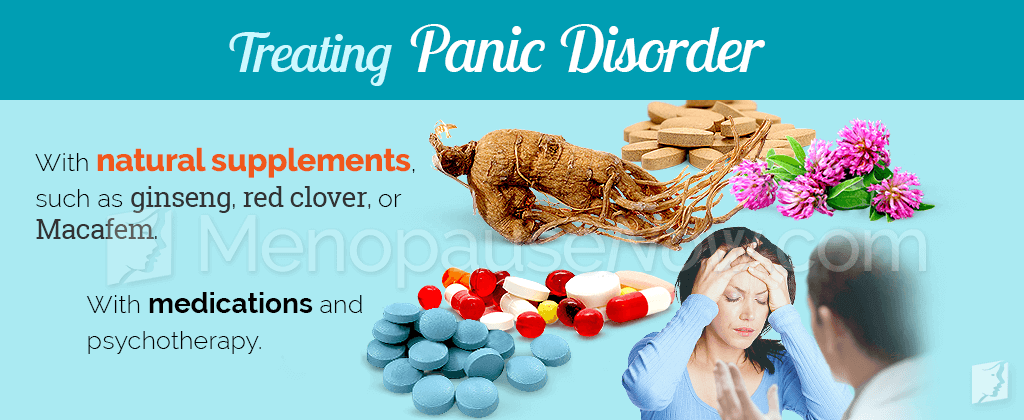
Finally, for women with exceedingly severe panic disorder, medications may be the best option for relief. It's important to consult a healthcare professional before administering this treatment option. Although medications might be the only way to attain relief for some women, they may come with side effects.
Click on the following link to learn specific treatments for panic disorder, which begin with lifestyle changes, move onto alternative medicines, and finally, if those options don't seem to help, medications. The most effective treatments for mild to moderate panic typically combine lifestyle changes and alternative medicines.
Sources
- Amin, Z. , Canli, T. & Epperson, C.N. (2005). Effects of Estrogen-Serotonin Interactions on Mood and Cognition. Behavioral and Cognitive Neuroscience Reviews, 4(1), 43-58. Retrieved from http://www.ncbi.nlm.nih.gov/pubmed/15886402
- National Health Service UK. (2014). Causes of panic disorder. Retrieved May 20, 2016, from http://www.nhs.uk/Conditions/Panic-disorder/Pages/Causes.aspx
- Office on Women's Health. (2010). Menopause and mental health. Retrieved May 20, 2016, from http://womenshealth.gov/menopause/menopause-mental-health/
- Smoller, J.W. et al. (2003). Prevalence and correlates of panic attacks in postmenopausal women: results from an ancillary study to the Women's Health Initiative. Archives of Internal Medicine, 163(17), 2041-2050. Retrieved from http://www.ncbi.nlm.nih.gov/pubmed/14504117

